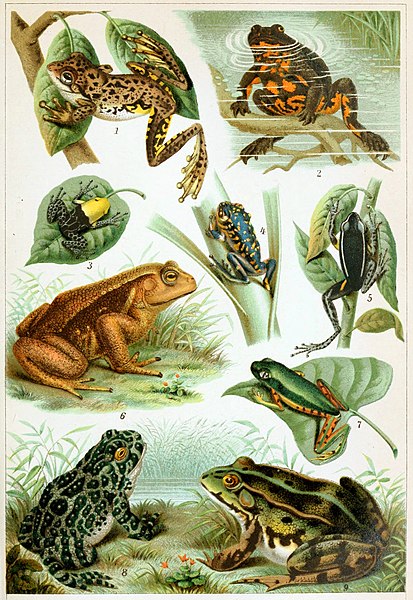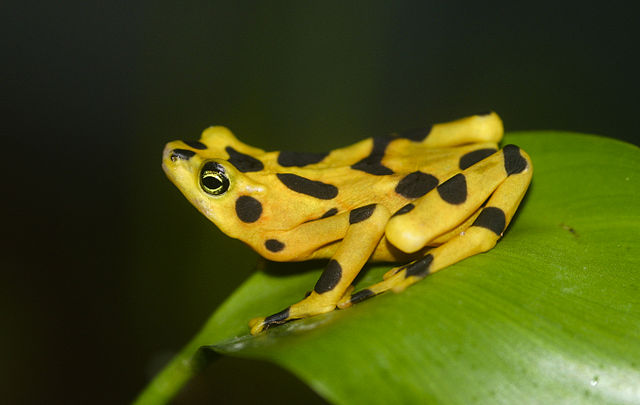Hylidae is a wide-ranging family of frogs commonly referred to as "tree frogs and their allies". However, the hylids include a diversity of frog species, many of which do not live in trees, but are terrestrial or semiaquatic.
Hylidae
Dryophytes versicolor, North American gray tree frog
Hyla japonica, Japanese tree frog
Smilisca phaeota, Osa Peninsula, Costa Rica
A frog is any member of a diverse and largely carnivorous group of short-bodied, tailless amphibians composing the order Anura. The oldest fossil "proto-frog" Triadobatrachus is known from the Early Triassic of Madagascar, but molecular clock dating suggests their split from other amphibians may extend further back to the Permian, 265 million years ago. Frogs are widely distributed, ranging from the tropics to subarctic regions, but the greatest concentration of species diversity is in tropical rainforest. Frogs account for around 88% of extant amphibian species. They are also one of the five most diverse vertebrate orders. Warty frog species tend to be called toads, but the distinction between frogs and toads is informal, not from taxonomy or evolutionary history.
Frog
Variegated golden frog (Mantella baroni) in the Ranomafana National Park of Madagascar
European fire-bellied toad (Bombina bombina)
Panamanian golden frog (Atelopus zeteki)








